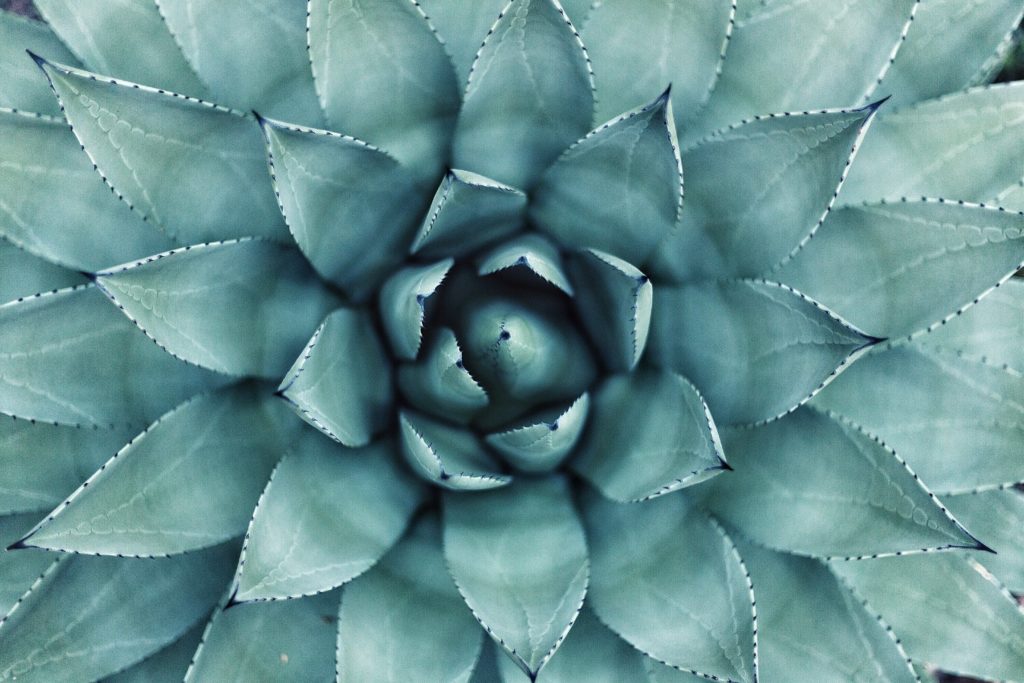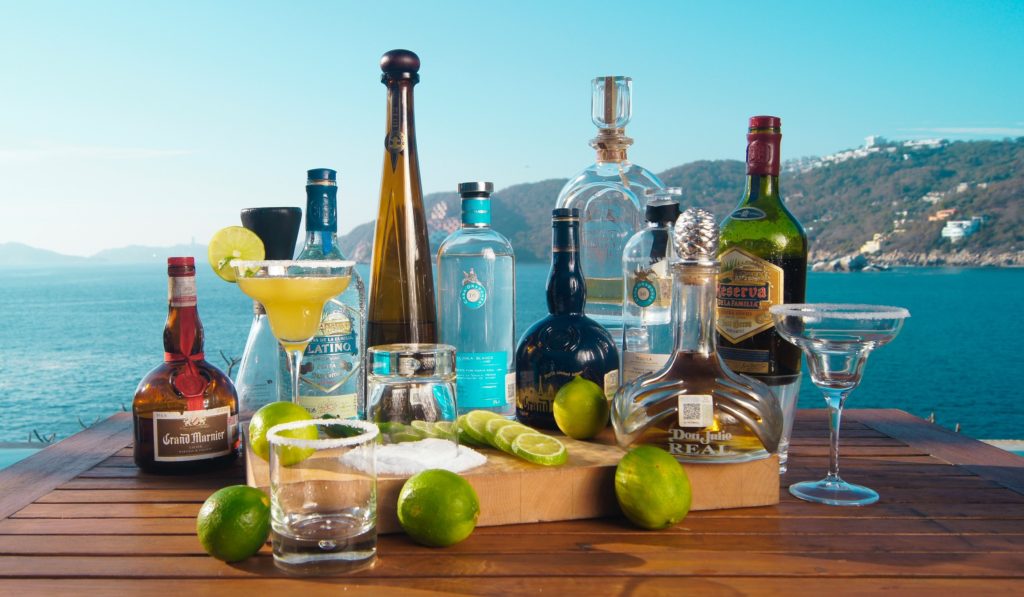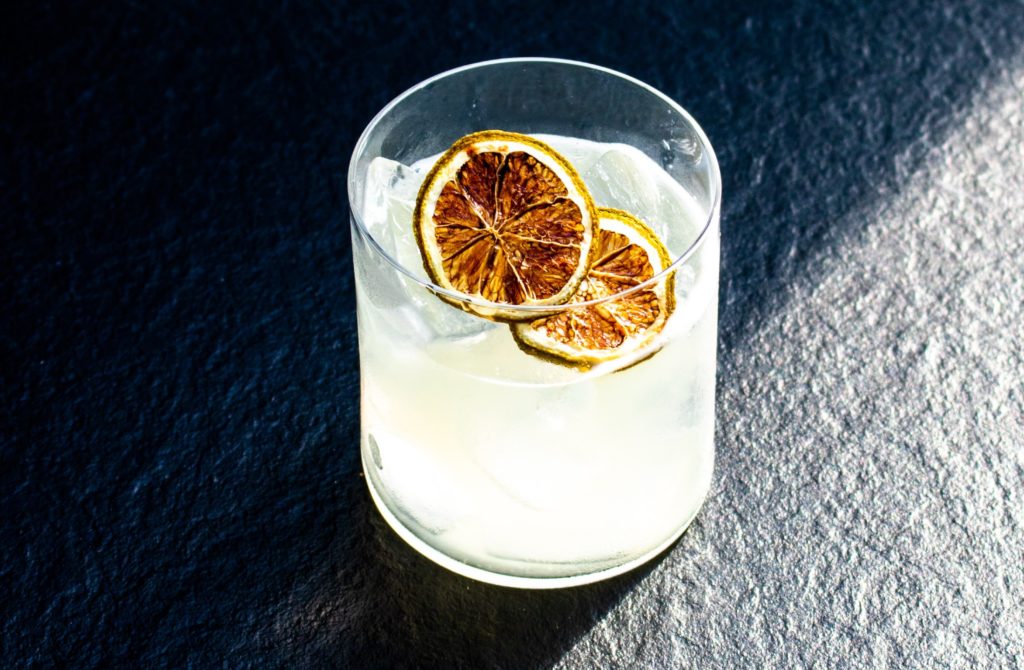Tequila: What Is It and How Is It Made?
If you like to drink margaritas, make tequila cocktails, or learn about the rich histories of your favorite liquors, then you need to know more about tequila. This strong, smooth alcohol is one of the most popular in the world. Just about anywhere you go, the bar will be stocked with a quality tequila, due to its popularity and versatility. Not only is tequila delicious on its own, but it can also be used in so many cocktail recipes. It can pretty much be paired with any flavor profile and work well.
If you are interested in tequila’s origins and history, you might also be interested in how tequila got its name. This alcohol got its name from the town of Tequila, which is near the city of Guadalajara. This is one of the first places it originated and was distilled. When the town was first starting out, there was only one tequila distillery in the city. Everyone went to this one place to get their tequila.
Now, you can find over 60 tequila factories just in this one city. Due to the near-constant production and distillation, you can smell the aroma of agave and tequila on every street corner. The main economic function of this town has been tequila production since the 19th century. It is also a very popular tourist destination, with hotels, tours, and a Jose Cuervo train that takes you through distilleries and agave plantations.
Many people associate tequila with the stuff you take a shot of at the bar that burns your throat. If you’ve had a bad experience with tequila, you’re not alone. There are definitely more than a few cheap brands that many bars stock for shots, and, yes, they will give you that burning sensation! But not all tequilas are like that.
Originally, tequila was served neat and meant to be sipped on. High-quality tequilas are smooth and flavorful, which allows you to slowly sip and enjoy them.
We think that in order to appreciate tequila, you need to learn more about what it is and how it is made. The best way to understand and enjoy tequila for its taste is to try as many types of tequila as you can. It just takes a bit of trial and error before you find one that you really enjoy drinking! We’ve put together the ultimate guide on tequila to help you learn more about it and become the next great tequila cocktail master.
What Is Tequila?
Tequila is one of the oldest types of alcohol in the world. It stems back for thousands of years (approximately 2,000 years, but it may be even older than that), starting with religious rituals and special ceremonies in Mexico. In fact, some legends say that tequila was created on top of a volcano and blessed by the gods. Many believed that the gods sent it to Earth for humans to consume.
This popular alcohol comes from the blue agave plant, which only naturally grows in specific regions across Mexico. The main region is called Jalisco, where a majority of all tequila companies grow their plants. Interestingly enough, only Jalisco and a few surrounding cities are able to grow the blue agave plant. Plus, there are certain rules and regulations for growing the plant for the production of tequila. This is why you do not see companies growing agave (and most of the time, producing the tequila itself) outside of these areas.
When you make tequila in the traditional way, it’s considered an art. There are long-standing traditions, recipes, and secrets that have been passed down for generations. It is not something that is mass-produced or created rapidly. It takes time, as agave plants take a few years (an average of five to seven) to develop before they can even be harvested for production.
Production facilities for tequila are on the smaller side, with most of the work done by hand, with the exception of machines being used for crushing the agave plant to extract the juice.
More Tequila
- Tequila Time: 5 Perfect Cocktails For Cinco De Mayo
- How To Make The Ultimate Classic Margarita
- Why Do They Put A Worm In Tequila?
- 4 Must-Have Cocktails For National Tequila Day
In the 1800s, two families produced tequila in Mexico; the Cuervos and the Sauzas (we’d bet you recognize the name José Cuervo). They were pretty much the only people making tequila on a large scale and were pitted against each other because they were each other’s only competition. They had a deeply-rooted rivalry that lasted for many years until other tequila companies were created to take away some of the pressure.
Although it’s been around for thousands of years, tequila did not become popular in America until the 1900s. After World War II, the demand for tequila grew exponentially due to its rise in popularity around the world.
It’s crazy to think that there were once only two tequila distilleries in the world, and now you can find countless tequila distilleries, brands, and companies just throughout Mexico alone. Tequila really can be enjoyed by everyone at any (legal) age, because there are so many different varieties. In roughly the last hundred years or so, it’s gone from being something that was only used for ceremonial purposes to a popular commodity that’s used for drinks and shots. What was once used for religious purposes now gets the party going!

The Agave Plant’s Importance in Making Tequila
The amazing agave plant is used to create tequila. Agave maintains a high production level of fructose and sugars called agavins, which spur on the fermentation process of making tequila. Agave thrives in Mexico because it needs rich, sandy soil filled with nutrients. The hot, dry climate makes for the ultimate agave growing conditions. You could technically grow these plants elsewhere, but they are traditionally grown in Mexico for the sole purpose of making tequila and mezcal.
Once this succulent reaches around five years of age, yellow flowers sprout on top, and this represents the end of the agave life cycle. Even more crazy—a fully grown agave plant can reach heights of seven feet tall!
How Is Tequila Made?
Unlike other types of spirits, which can use a range of base ingredients, tequila can only be made from a blue agave plant. This plant is native to Mexico, which is why tequila is only distilled in Mexico. More specifically, the plants are harvested and then distilled in Jalisco and a few surrounding municipalities. Any spirit that is made from agave outside of these areas is known as mezcal. There are six steps to follow in the process of making tequila.
1. Harvesting
Harvesting the blue agave plant is the first step in the tequila-making process. Workers called jimadores go into the agave fields and use a machete to cut off the leaves and thorns from the plant. They will keep cutting and removing leaves until they reach the center of the plant, which is called the corazon (heart). They remove this bulb-shaped part of the plant, which can be very heavy. The work is done entirely by hand and by using the same techniques that were invented hundreds of years ago.
2. Cooking
After the plant is harvested, it must be cooked in a large oven. Traditional methods involve using a stone oven, which helps to steam roast the plant instead of heat roast it. The total cooking process from start to finish takes about 48 hours. Cooking the agave helps to get its sugar ready for the fermentation process.
3. Fermentation
Fermentation is a process that occurs for the production of all types of alcohol. This is when yeast is added to eat the sugar in whatever is being used (in this case, it’s agave). The yeast eating the sugar results in the production of alcohol. On average, fermentation will take four to six days to complete.
4. Distillation
Regulations for tequila require it to be distilled twice for sanitary and health purposes. Unlike other spirits, which can be distilled more than twice, tequila should not be distilled more than twice in order to maintain its flavor profiles. Distillation is when alcohol is concentrated through evaporation.
5. Aging
This is arguably the most important step in the tequila-making process. Aging is done in whiskey or bourbon barrels, which helps to add unique flavors to the tequila. It is also what gives the aged tequila its golden or caramel color. The aging process will depend on the type of tequila that is being made. If it is tequila blanco, it will skip this process entirely.
What Kinds Tequila Are There?
There are several kinds of tequila: blanco, joven, reposado, anejo, and extra anejo. Each of these names relates to how long the tequila has been aged. You can technically age tequila for as long as you want, but there aren’t many brands out there that age it for longer than seven to ten years (and that’s on the long side of aging).
The most obvious difference between these types of tequilas is their color, which is influenced by their age. Some tequila is clear, while others are a golden color, and others are a dark caramel color. A general rule of thumb regarding the colors of tequila is that the longer it is aged, the darker the color will be. The only time when this rule does not apply is when some companies simply add coloring to their tequila to change the color, and it is not actually aged. Most of the time, however, it is safe to assume that a dark-colored tequila has been aged significantly longer than a clear-colored one.
Blanco
Also known as silver tequila, this is the most common type of tequila used for mixed drinks and shots. It has the purest taste out of all the types of tequilas. This is because it is not aged at all, and it never sees the inside of an oak barrel. The end result is a clear tequila that tastes like, well, tequila. It is most commonly made from 100% blue agave plants.
Joven
Tequila joven is a very unique type of tequila. The reason for its uniqueness is because it is made from a blend of tequilas. It mixes aged tequila with unaged tequila, resulting in an interesting taste that is unlike other types. It is usually gold in color and can be made with added colorings and flavorings. Higher-quality companies will skip out on the additives and simply use a five-year aged tequila to blend with an unaged one.
Reposado
Tequila reposado is a tequila that is aged for a minimum of two months, but no longer than 364 days. If it is aged for just one day longer, it falls into a different category of tequilas. Reposado can be used in mixed drinks and shots. It is a light golden color and can appear as an almost yellow color with some brands. It is unusual for it to be any darker than a shade of gold.
Añejo
This type of tequila is aged for a minimum of 12 months and for a maximum of three years. It ranges in color from light amber to dark amber color. This is the most common aging time for tequila because tequila aged for longer than three years is rare. It can be used in dark and smoky cocktails, but typically it is served neat in a small glass made for sipping. Most tequila brands age their añejo tequila for over 12 months to increase its value.
Extra Añejo
Tequila extra añejo is the rarest and typically most expensive type of tequila. It must be aged for a minimum of three years, but there is no maximum for how long it can be aged. The longer it is aged, the darker and rarer the tequila will be. It can be almost brown in color, but still has hints of amber and gold in it. You would almost never use tequila extra añejo in a cocktail because of the fact that it is rare and should therefore be enjoyed as is.

Best Tequila Cocktails
You know the history of tequila, and you know how it’s made. You know the different varieties and how they are consumed. The last piece of the puzzle for you to be a master of this spirit is learning some amazing and classic tequila cocktail recipes. After all, tequila wasn’t made to just learn and read about; it was made to be enjoyed. We have compiled a list of six of our favorite tequila cocktail recipes and how to make them.
The Margarita
The margarita is what some consider to be the best tequila cocktail in the world. We aren’t saying we agree, but we definitely don’t disagree. You can get it frozen or on the rocks, whichever you prefer. It comes in pretty much any fruit flavor you can imagine, and it always hits the spot when you are in the mood for a tequila drink. When it comes to margaritas, you typically use silver tequila. The reason for this is that silver will blend well with other flavors. Here are the ingredients you’ll need for a classic margarita on the rocks:
- Tequila
- Lime juice (squeezed fresh)
- Triple sec
- Salt or sugar
You will first add all of the ingredients into a shaker with a handful of ice. Give everything a really good shake so that it’s fully combined. Next, take your glass and rim it with lime juice. Cover the rim with salt or sugar, whichever you prefer. Add the mixture in the shaker to a glass with ice, and garnish it with a lime. Now you’re ready to party!
The Paloma
The Paloma is probably the simplest tequila cocktail you can make. It’s tart, tangy, and it can pack a punch. All it takes is three ingredients and a few minutes to make. Before you know it, you’ll be sipping and serving one delicious cocktail. Sometimes it’s the simple ingredients that make for the best drink. Here’s what you need:
- Tequila
- Fresh lime juice
- Grapefruit soda
We told you it was simple! Now, add the three ingredients into a cup with ice. Use a spoon to stir everything until it’s combined. Garnish with a lime wedge if you desire just to make it look more complex than it really is.
The Tequila Sunrise
This is one of the most classic tequila cocktails you can make. The Tequila Sunrise rose to popularity in the 1970s, with bands like The Rolling Stones and The Eagles drinking them and writing songs about them. You might have also heard of the Tequila Sunset, which is very similar, but not quite the same. You only need a few ingredients to make this tropical and tasty drink.
- Tequila
- Orange juice
- Grenadine
- Orange slices
- Maraschino cherries
First, take a glass and fill it with ice. Then, add in the orange juice and tequila on top of the ice. Mix with a long spoon to ensure the tequila and juice combines. Next, you will pour the grenadine in slowly, so it sinks to the bottom of the drink. This will add really cool layers of red and orange to the drink, making it look like a sunrise. Top it off with some orange slices and cherries.
The Tequila Sunset
This drink is nearly identical to the Sunrise, but not quite. It is much less sugary because it skips out on the grenadine. Instead, you will use red food coloring to dye the soda water red. That way, you are still getting a bright color pop. You need four ingredients for this drink.
- Tequila
- Orange juice
- Soda water
- Red food coloring
First, you will fill a glass with ice, and just like the Tequila Sunrise, you add in the orange juice and tequila. Here’s where things get different: instead of grenadine, you are adding in the red-colored soda water. You want it to float at the top of the drink, to make it look like a sunset.
The Bloody Maria
We’re sure you have heard of the Bloody Mary. Most people either love it or hate it due to the use of tomato juice. But, if it’s the vodka you don’t like, the Bloody Maria might be the drink for you. When you use vodka, the flavor can get lost in the spicy tomato and pepper mixture. When you use tequila instead, it stands out and gives it a real kick. Here’s what you’ll need:
- Tequila
- Horseradish
- Worcestershire sauce
- Lime juice
- Celery salt
- Pepper
- Tomato juice
- Dijon mustard
As you can see, there are a ton of ingredients for this recipe, which is standard for tomato-based cocktails. There is also a ton of room to play around with ingredients and add whatever you think will taste good. Start by adding all the ingredients into a glass with ice, except for the tomato juice. Add that on top of everything else. Transfer back and forth between two glasses until things start to combine. Give it a good mix with a long spoon, and garnish with lemon and lime wedges and celery sticks.
The Marble Queen
This is one of the more unique tequila drinks, and it is comparable to a vodka drink called the White Russian. It’s not super fruity like many other tequila cocktails, but it’s still tropical thanks to the use of coconut in the recipe. If you aren’t a fan of super fruity drinks, this is definitely the tequila drink for you. It’s creamy with a little bit of a kick, and the lime helps to pull everything together. Here is what you’ll need:
- Cream of coconut
- Fresh lime juice
- Tequila
- Salt or spice mix
Add all of the ingredients to a shaker with ice, and give it a good shake until everything is combined. Strain into a glass with ice. Rim it with salt or a spice mixture with spices such as cayenne pepper for a kick.

Best Tequila Brands
Browse through the list and see if anything catches your eye.
- Casamigos: This brand is exceptionally well-known thanks to its founders: best friends and partners George Clooney and Rande Gerber. They grew the company and it is now worth $1 billion. The tequila is known for being crisp and smooth. It has hints of vanilla, citrus, grapefruit, and agave, making it a great pairing for any tequila cocktail you want to try.
- Don Julio: This tequila brand is an affordable one, ranging from $20 to $50. It is double distilled and contains notes of citrus and black pepper. There is also the 1942 label (named after the year the brand was created), which is more expensive and even higher-quality. Don Julio is the largest tequila brand in terms of value in the world.
- Patrón: This brand of tequila is often found in nightclubs, and it’s almost always available for bottle service. Because of this, it is known by many as a tequila that’s made for partying. People like it because it goes down much more smoothly than other types, making for easy drinking. Everything, including the bottles and corks, is made at their distilleries.
- El Jimador: This tequila is loved by many because it goes down smooth but has a kick of peppery heat at the same time. It’s also light and herbal, so it works with most cocktail recipes. It has crisp citrus flavors to help balance out the pepper.
- Espolòn: Double distillation makes for a smooth and balanced taste. It’s crisp and pure which makes it mix well with any flavor pairing. They have a range of different varieties which are all great. This is one of the better brands for sipping tequila on its own.
- 1800: This tequila is perfect for sipping neat. It is 80 proof and comes straight from Mexico. It has hints of fig and dried grasses that make for a deep overall flavor. It goes down smoothly, so you’ll never have to worry about that cheap burning sensation again.
- Mezcal Vago: Remember when we told you how agave-based alcohol that’s made outside of Jalisco is called mezcal? This is one of the best. Mezcal Vago has a unique taste with hints of smoky corn, wood, honeycomb, tropical fruit, and smoke. Works great in cocktails or perfect for sipping on its own.
Pick your favorite tequila recipes, assemble your ingredients, and get in the kitchen (or behind the bar) and start making some amazing tequila cocktails of your own!
Order Tequila Online
Tequila Delivered To Your Door
Find The Right Tequila For You With Saucey
Now that you know everything there is to know about tequila, it’s time to put that knowledge to use and pick out some new tequilas to try. The best place to get your tequila delivery (and any alcohol) is from Saucey. We have hundreds of different tequila brands and varieties to try. We even have several types of mezcal as well. No matter what kind of tequila you like to drink, we’ve got it.
If you are unsure of which brand to buy, no worries. We know it can be overwhelming at times to choose from all of those options! To make things easier, we have created a list of a few different brands that are very popular. While you don’t necessarily need to choose the most popular tequila to choose the best one, sometimes it’s helpful to know what a majority of people like when it comes to alcohol.



